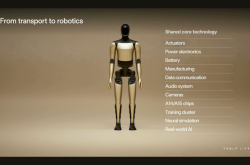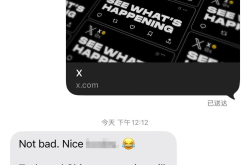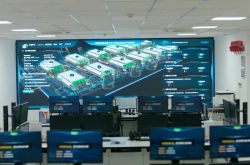What are the products and technological routes that Musk is betting on for Tesla behind the trillions in compensation?
![]() 11/10 2025
11/10 2025
![]() 369
369
At the recent 2025 Annual Shareholder Meeting, Tesla shareholders approved an unprecedented compensation plan that deeply binds CEO Musk to the company's future for the next decade.
If Musk increases Tesla's market value from the current approximately $1.1 trillion to $8.5 trillion over the next decade, he will receive compensation worth nearly $1 trillion. This is not only the largest corporate executive compensation plan in business history but also a massive gamble on Tesla's transformation into an artificial intelligence and robotics giant.
So, what are the products and technological routes that Musk is betting on for Tesla behind this trillion-dollar compensation? This article will analyze and interpret Tesla's products and technological routes that underpin Musk's trillion-dollar compensation through the following aspects.
Optimus Human Bionic Robot: Buy a Real 'Human' at Car Prices
FSD and Cybercab: From Eyes-Off to Sleeping L4.
AI Chips and Energy Power: From AI567 to Mega Pack/Block to Why Not Solar-Powered AI Satellites?
Vehicles and Others: Sports Cars, Semi-Trucks, MPVs, and Perhaps XAI and SpaceX Offer Greater Imagination.
Optimus: Human Bionic Robot
The first product carrying the trillion-dollar compensation is the humanoid robot. Musk stated that the scale of the humanoid robot Optimus will be unprecedented. He believes it will be the largest product ever, far surpassing cell phones or any other product.
Because everyone needs a humanoid robot avatar to handle matters in this human-centered world, as humanoid robots are versatile and will not be as specialized as many current products.
Regarding humanoid robot products and technology, Musk believes there are three major challenges in manufacturing humanoid robots:
1. The engineering design of the forearm and hand. This is truly difficult, as humans can achieve 'just the right grip.'
2. Real-world AI, also known as Physical AI.
3. Mass production, organizing the supply chain, and achieving productization for consumers to purchase.
Through the three challenges expressed by Musk, the values of the Optimus product are actually highlighted. Human hands should be the most capable point of interaction with the physical world. After all, we often say 'creating the world with our hands,' which expresses this meaning. The hand is the most frequent and capable organ for humans to interact with and change the physical world.
This can be associated with XPENG's recently released Iron, which walks like a cat. Clearly, one showcases legs, while the other showcases hands, creating a differentiation.
Showing off legs undoubtedly has more advertising elements. However, there is no doubt that XPENG's leg showcase was a huge success. A few more words about XPENG Iron: it will certainly be able to enter mass production, but its usage scenarios have been given by He Xiaopeng as 'shopping guides and tours.' It must be said that XPENG's product manager is on point, having maximized the product and brand under existing technological capabilities.
Returning to Musk's three challenges, they actually serve to demonstrate that Tesla is the only company that simultaneously possesses these three elements.
Musk stated that Tesla is already the world's largest robot manufacturer, as each vehicle is a four-wheeled robot. Tesla possesses all the foundational elements required for robot manufacturing: batteries, power electronics, motors, gearboxes, visual AI, AI chips, and software. This is indeed true. 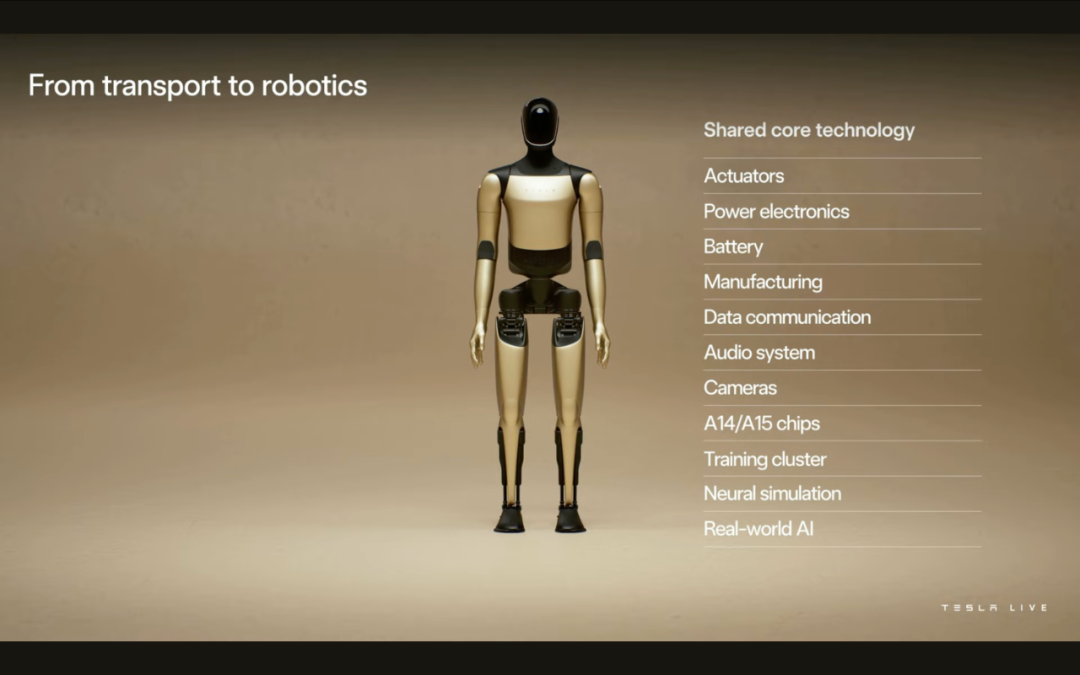
Finally, Musk believes that within approximately 20 years, it may be technically feasible to take a near-mental snapshot via Neuralink and upload it to Optimus. If this can be achieved, it would truly be a bionic human.
Musk plans to start Optimus humanoid robot production with a million-unit capacity production line in Fremont. Musk also made a bold statement, followed by an annual production line with a capacity of 10 million units. The ultimate goal: reaching 100 million units or even 1 billion units annually.
Production Costs: Once a sustained annual production of approximately 1 million units is achieved, the production cost of Optimus may be around $20,000 at current dollar values. By then, purchasing a robot is estimated to be equivalent to the current price of buying a car, which could indeed trigger greater economic and social benefits than automobiles.
Optimus 3 is currently undergoing trial production in factories, with mass production set to begin in 2026. For related product technology, see our previous article 'How Many Cameras Make Up the Eyes of Tesla's Humanoid Robot Optimus?' 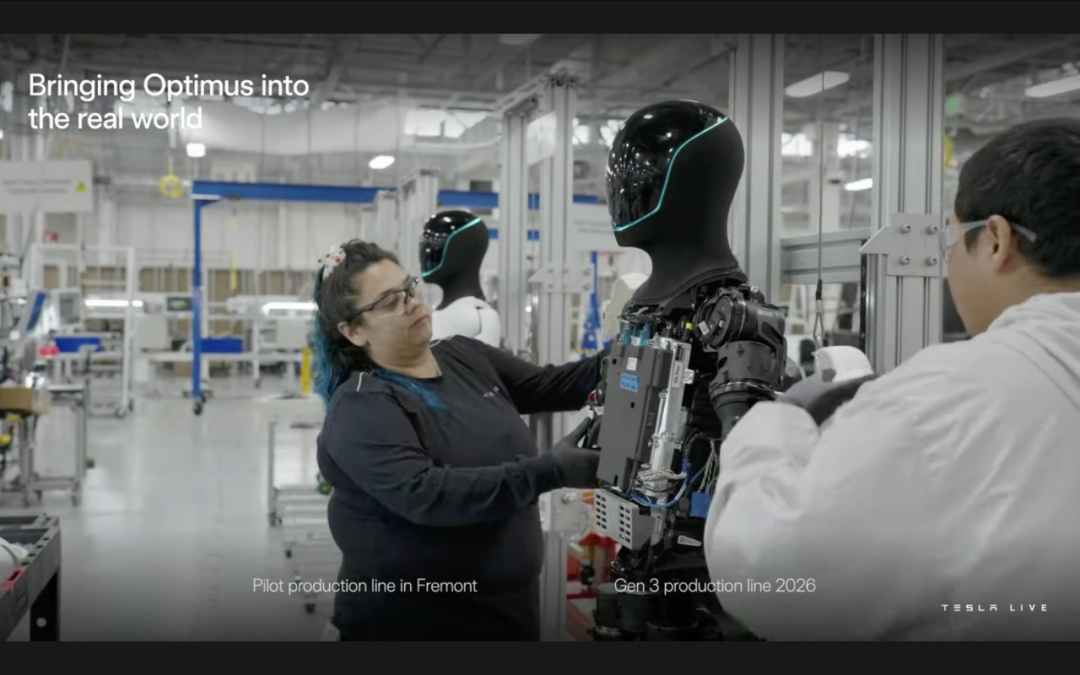
Optimus 4 and 5 are expected to begin production in 2027 and 2028, respectively, achieving significant annual improvements and substantial increases in production volume.
FSD and Autonomous L4 Cybercab
Regarding autonomous driving, in addition to FSD, Tesla has added L4 Cybercab.
At this meeting, Tesla showcased operational statistics for FSD, which indicated that miles driven using FSD are much safer than those driven without it, reducing accidents by nearly 85% and preventing 35,000 casualties. Ultimately, this will translate into saving millions of lives and avoiding hundreds of millions of accidents. 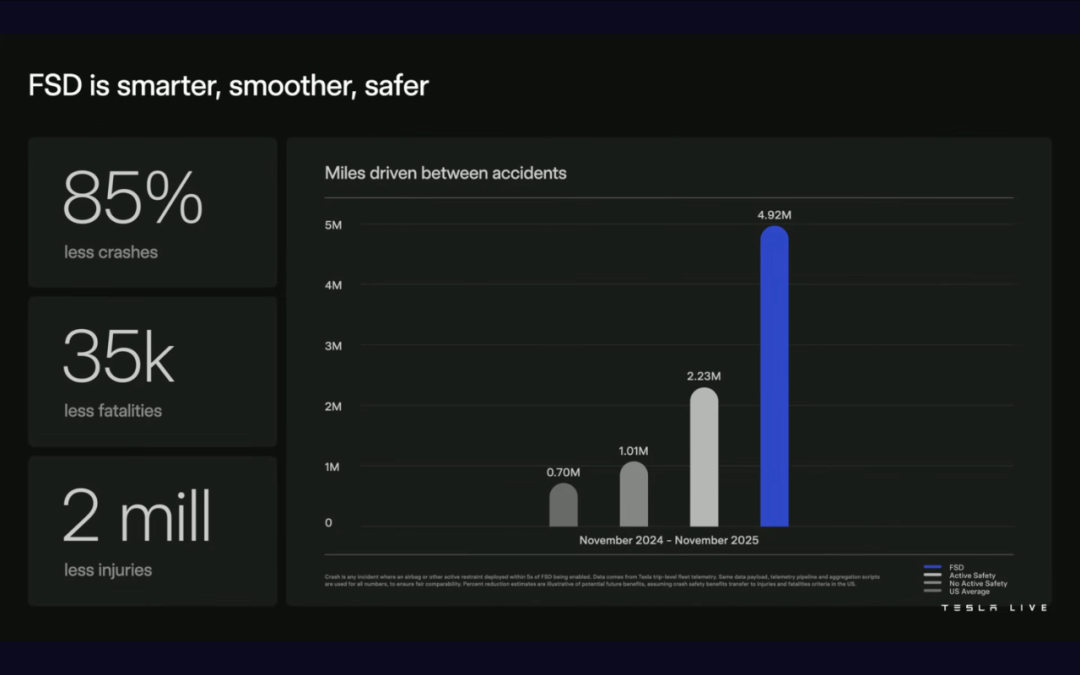
At this meeting, Musk aggressively revealed the FSD version roadmap from L2 to L4:
FSD Version 14 is approaching the point where people can text while driving, meaning they can take their eyes off the road. If true, this would be a 'killer application.'
Musk stated that the next one or two updates, likely Version 14.2, will achieve eyes-off driving similar to L3. Musk hinted that by Version 14.3, users will be able to 'basically fall asleep and wake up at their destination,' meaning a true L4 autonomous driving experience.
Regarding regulatory challenges for FSD, Musk stated that currently, even supervised FSD is not allowed in Europe. He hopes European customers will pressure regulators.
In China, Tesla has received partial approval and hopes to obtain full approval for FSD around February or March next year. This full approval may mean hands-off and eyes-off FSD, or it could relate to the Cybercab's entry into China, as Tesla recently showcased its Cybercab at the China International Import Expo.
CyberCab (Tesla's autonomous taxi) is the first vehicle specifically designed for unsupervised fully autonomous driving. It does not even have pedals or a steering wheel.
CyberCab production will take place at the Texas factory and begin next April.
Regarding manufacturing efficiency, the CyberCab's manufacturing system is closer to that of high-capacity consumer electronics, such as cell phones, rather than traditional automotive production lines. He believes that a cycle time of less than 10 seconds can ultimately be achieved, theoretically even reaching 5 seconds. This means a production line could produce 5 million vehicles annually. 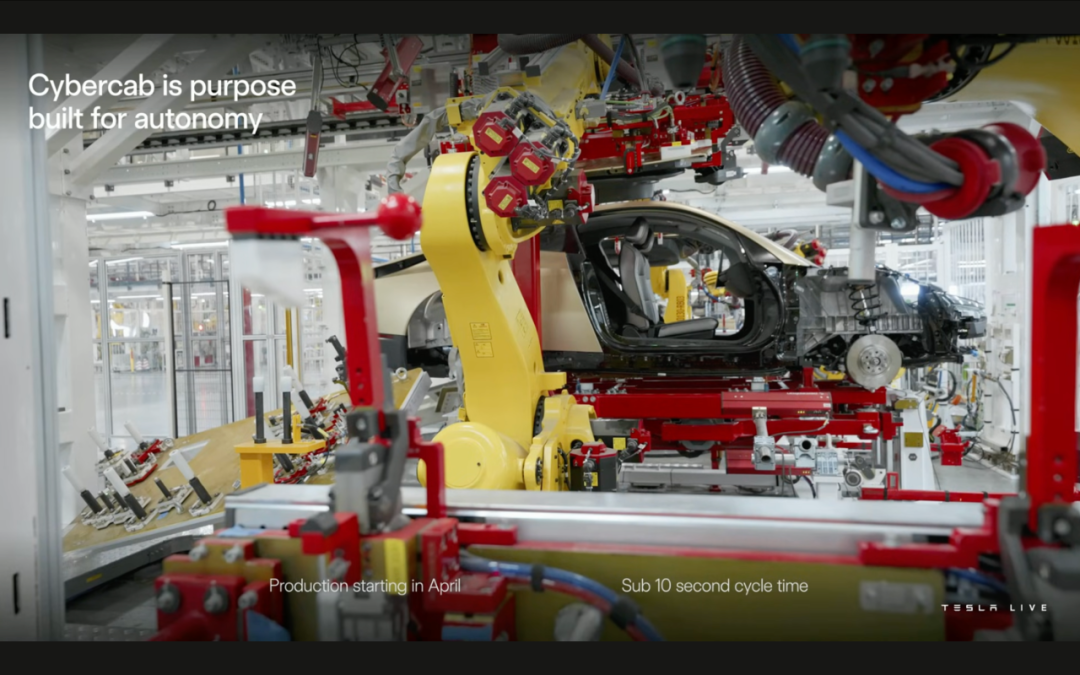
Regarding CyberCab's operational costs, Tesla stated that through extensive efforts, the cost per mile can be reduced to below 20 cents (in current dollars).
However, Tesla's CyberCab L4 has not yet received regulatory approval from governments, but Musk stated that he believes the speed of obtaining regulatory approval will roughly match the production speed of CyberCab. Additionally, Musk will internally handle insurance operations for CyberCab in the future.
AI Chips and Energy Power
For Tesla and all general artificial intelligence companies, chips and power represent their potential ceilings.
In our previous article 'Technical Details and Implications of Tesla's AI5 Chip,' we also shared technical and manufacturing information about Musk's AI5 chip. At the 2025 Tesla Shareholder Meeting, Musk disclosed some details about the performance and manufacturing of the AI5 chip:
Performance and Cost: Musk stated that the power consumption of the AI5 chip may be only about one-third of NVIDIA's Blackwell chip, with roughly equivalent performance and a cost far below 10%. 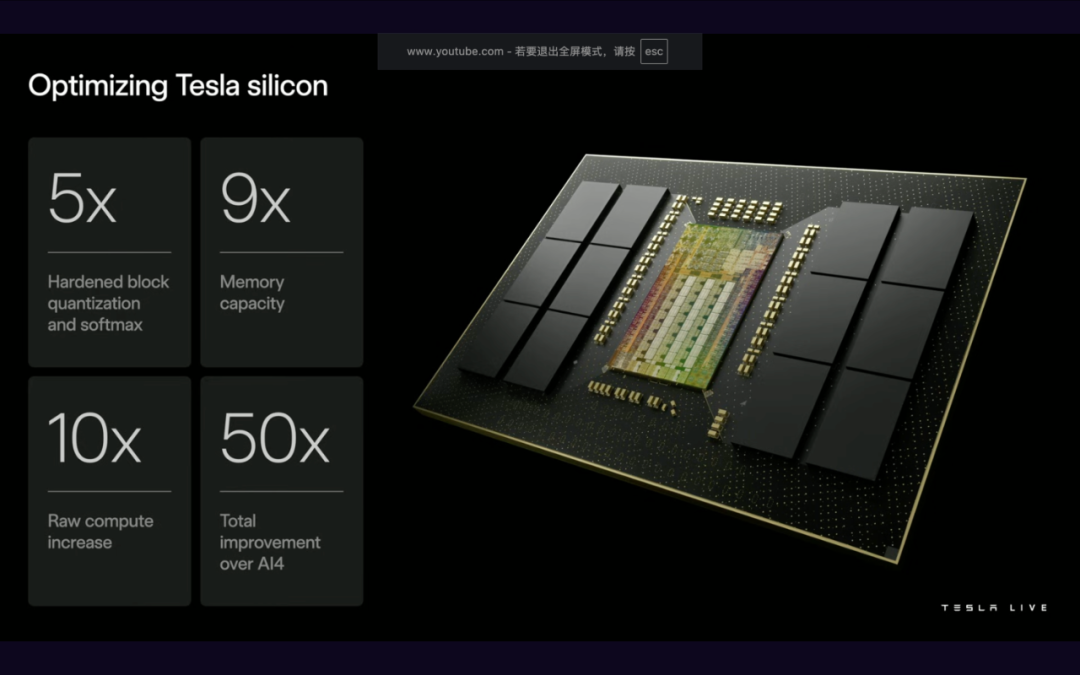
Hardware-Software Integration: The chip is highly optimized for Tesla's AI software stack. It uses integer operations (commonly seen as INT8) instead of floating-point operations (commonly seen as FP32/16/8, etc.). Integer operations handle whole numbers and are generally faster, while floating-point operations handle numbers with decimal parts. Therefore, integer operations are more efficient and energy-saving than floating-point operations.
Of course, this cannot be generalized. We may produce content to analyze this in the future. Musk pointed out one thing: you cannot train using FP but switch to INT for inference. This implies that Tesla uses INT for both training and inference.
Manufacturing Plan: The AI5 chip will be manufactured in four locations: TSMC Taiwan, Samsung Korea, TSMC Arizona, and TSMC Texas.
Musk also stated at the meeting that they now have an evolutionary direction for AI6. In the future, AI6 will likely double all the performance parameters of AI5. He also expressed hope that AI6 will transition to the same fab production within a year of AI5's mass production.
Potential Self-Built TerraFab: Musk stated that if the number of chips produced by foundries remains insufficient in the future, Tesla may need to establish a Tesla TerraFab (larger than a Giga unit, with 1T = 1000G, hence not called a GigaFab), aiming for a scale of at least 100,000 wafers per month initially, potentially evolving into a complex campus with 1 million wafers per month.
AI Inference Fleet: When vehicles are idle, Tesla can utilize them as a vast distributed AI inference fleet. If there is a fleet of 100 million vehicles, each running one kilowatt of inference, that would be 100 gigawatts of distributed inference computing power with built-in cooling and power.
Regarding energy, once AI computing chips and inference capabilities are in place, the bottleneck may be electricity.
Musk believes that solar energy has immense potential, pointing out that 99.8% of the mass in the solar system is concentrated in the sun. Jupiter accounts for 0.1%, and the remaining 0.1% is miscellaneous, with Earth falling into this miscellaneous category. Based on this reasoning, Musk believes that Earth's nuclear fusion reactors cannot possibly compete with the 'giant nuclear fusion reactor' in the sky. Therefore, Musk continues to bet on solar energy rather than nuclear fusion for energy.
Combining solar energy and AI, Musk stated that solar-powered AI satellites will be developed in the future. This is somewhat similar to what we shared in our previous article 'NVIDIA GTC 2025: Three New Product Technologies in 6G Communications, Quantum Computing, and L4 Autonomous Driving,' where NVIDIA and Nokia are developing AI base stations.
Jack speculates that solar-powered AI satellites may be the next form of Tesla's Starlink, representing a massive business opportunity.
Additionally, Tesla is betting on the power storage industry. Musk stated that the total power generation capacity in the United States is approximately 1 terawatt (Terawatt), but the average electricity actually used is less than half. The rest is wasted due to day-night and seasonal differences, primarily because there is no effective energy storage method. Therefore, Musk stated that by deploying batteries as an effective energy storage method, the United States' energy output can be doubled without building any new power plants. 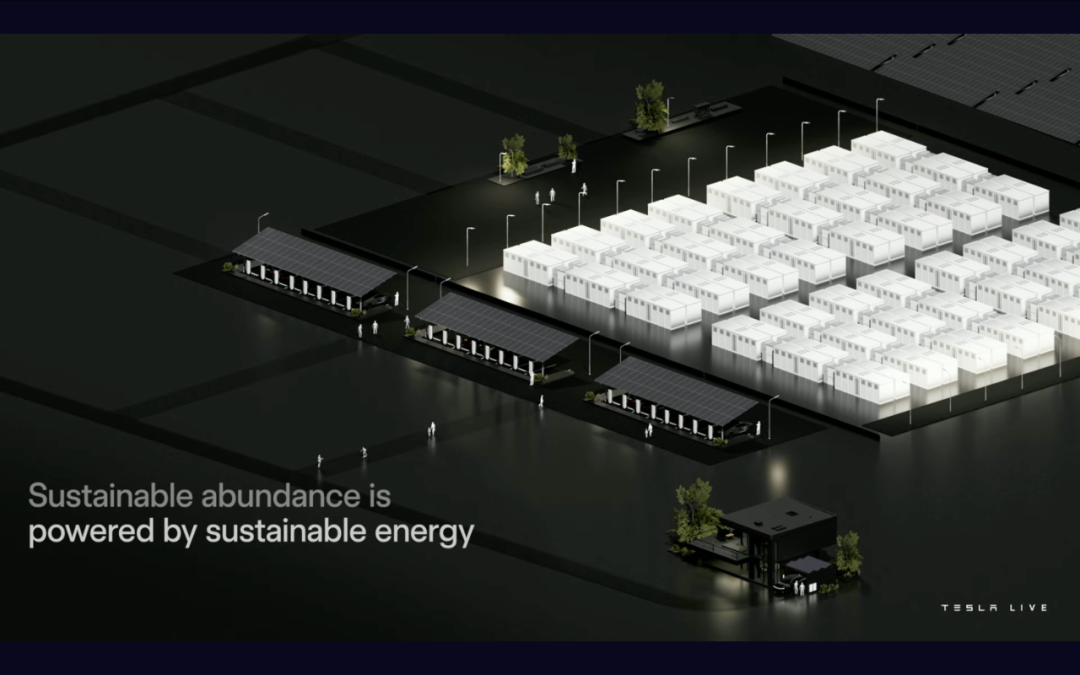
Therefore, Musk has developed a Megablock based on the home Mega Pack, making it very easy to deploy utility-scale batteries by simplifying components and integrating them for 'plug-and-play' functionality. 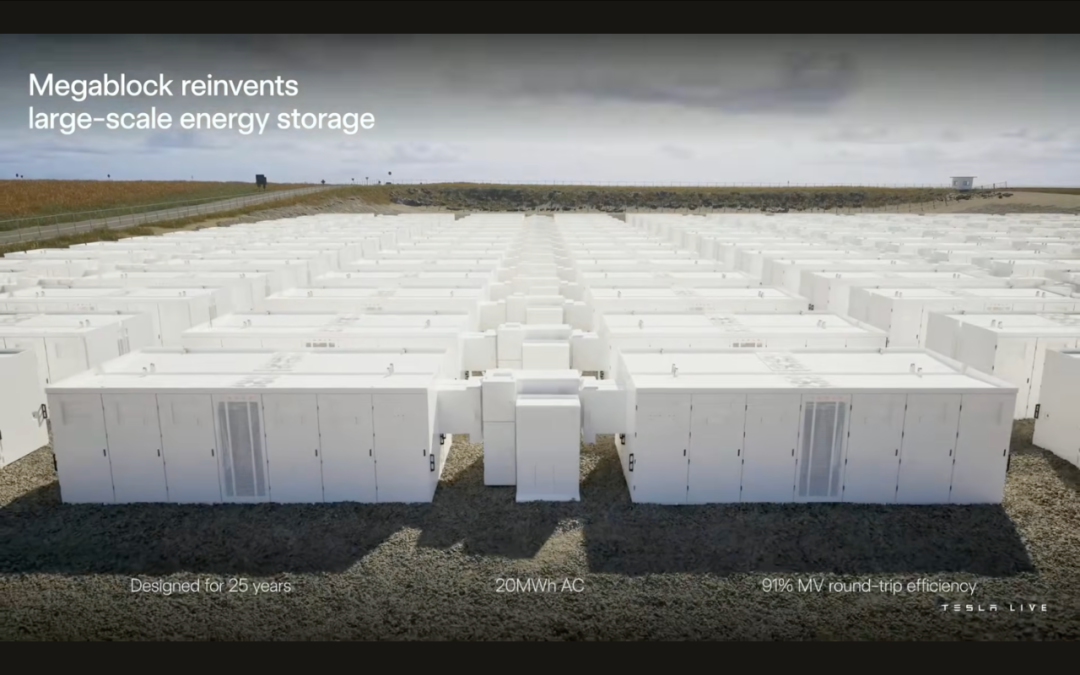
Future Goal: Gradually increase power electronics components to enable Megapack to directly output voltages up to 35 kilovolts, eliminating the need for substations. The goal is to achieve simple installation similar to the Powerwall, where users only need to connect wires for it to work.
With such ambitious battery opportunities, how to ensure cell and supply chain security? Musk stated that Tesla will build the largest lithium refinery (initial capacity of 50GW) and electrode cathode factory outside of China in Corpus Christi, South Texas, to address geopolitical issues and ensure raw material supply. Additionally, Tesla stated that when supplier capacity is insufficient, they can also produce 4680 batteries at this factory.
Vehicle Models and Others
Unexpectedly, automobiles have become Tesla's least imaginative product. Currently, Tesla's remaining strong cards for vehicles are:
Second-Generation Roadster 2: The product unveiling event is scheduled for April 1st next year. This may be the most exciting product demonstration ever. Production is expected to begin approximately 12 to 18 months after the unveiling. Founders Series reservation holders will be invited to the unveiling.
Tesla Semi (semi-trailer truck): Will commence mass production at the Nevada factory in 2026.
Robovven/Robus: An MPV spacious enough to accommodate a wheelchair. Given that Optimus, Cyber Cab, and Semi are all planned for launch next year, this model might be introduced around the year after next. 
However, there is limited room for imagination regarding Tesla's vehicles. If we simply classify a vehicle as an intelligent third-space car, then Chinese intelligent electric vehicles basically outperform Tesla and all other cars.
Regarding the future of AI, there is a question of whether power will shift away from humans. Musk candidly stated that in the long run, AI will wield power instead of humans, and we just need to ensure that AI remains friendly.
Previously, I might have thought Musk was talking nonsense. After all, AI is a creation of human civilization. How could AI possibly take power from humans?
But recently, I watched an interview with Geoffrey Hinton, the father of AI and a Nobel laureate. He expressed the idea that even if AI is less intelligent than humans, it could still control humans, much like a human child controls its mother.
So, let alone when AI becomes even more powerful. There's no need to elaborate further on that. 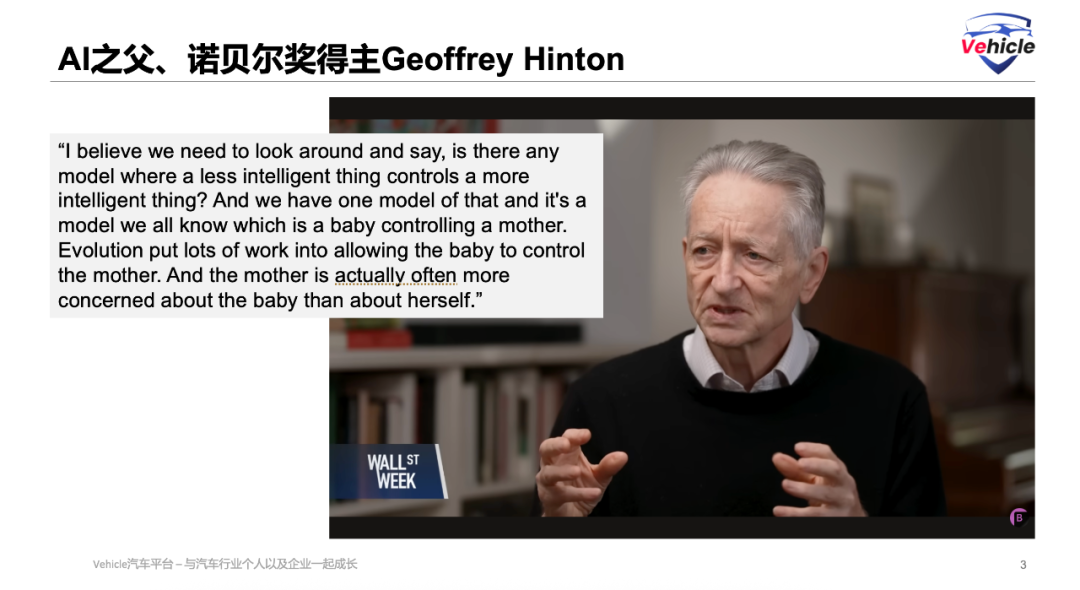
Regarding SpaceX, Musk stated that he hopes to find a safe way for Tesla shareholders to participate in investing in SpaceX. He believes that SpaceX should eventually become a publicly traded company, despite the numerous drawbacks associated with going public.
Insurance Issues: Some shareholders complained that Tesla insurance is overly expensive and does not consider the safety of FSD. Musk responded that Tesla insurance is striving to expand, but the regulatory structure for insurance is extremely complex across different states, posing a 'real headache.' When vehicles operate as Cyber Cabs, Tesla will simply opt for self-insurance.
Regarding XAI: Since they are all related to AI, training Optimus requires a substantial amount of computational power for training. Ultimately, it will necessitate spending tens of billions of dollars on computational power for training. Musk believes that potential collaboration with XAI could accelerate this process. Of course, during this shareholder meeting, some proposed that Tesla invest in and acquire XAI, but the proposal was not passed and will be discussed further later. >>>>

